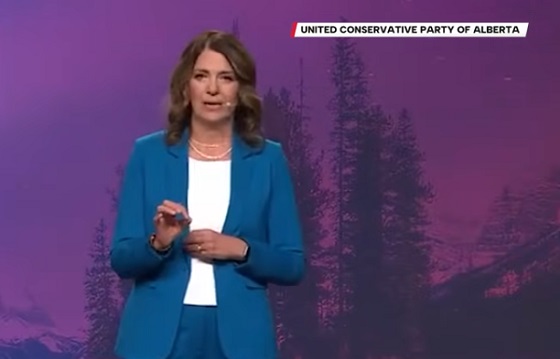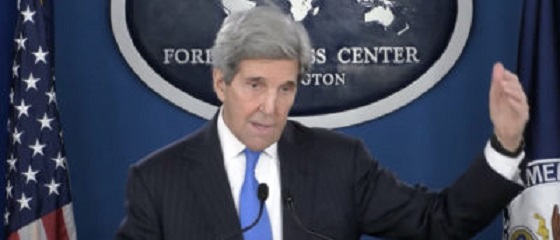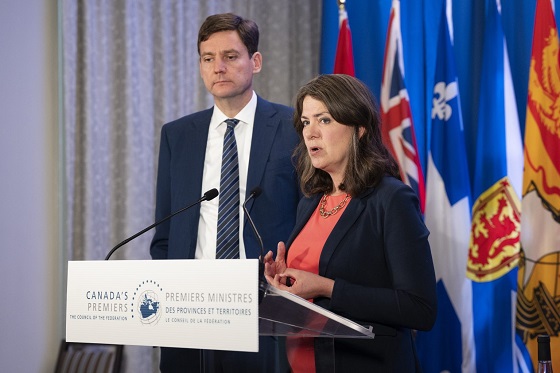Alberta
My endless date with self-isolation has led to some sobering realizations

 My endless date with self-isolation has led to some sobering realizations.
My endless date with self-isolation has led to some sobering realizations.
For my friends and family who haven’t seen me all week, you can watch me on CTV Two’s Alberta Primetime. Here is a link to a segment we taped Friday, March 13th. My interview appears at about the 8 minute mark. I’d like to thank the station for having me on to talk about my experience.
___________________________________________________
It’s now day 10 of my self-isolation. What have I learned? Well, a few things, some about myself.
I didn’t wash my hands often enough or with enough rigor. I do now. And I will continue to be more diligent. It’s an essential habit for the overall good of the community at large. And I’ve learned that good old soap and warm water are your best bet. There are small bits of fat that hold this virus together and soap breaks down fat.
Oh, and clean your phone. Just think about how disgusting that device really is. You leave it on the counter at your local bar. You hand it to your drunken friend at the club to co-obsess over your newsest Tinder crush. And guys, admit it, you’ve left it on the top of the urinal while doing your business. Don’t tell me you haven’t. A cursory search on google tells me that disinfectant wipes are safe to use. So wash your device. And your phone… (that’s humour – I’m killin’ myself – you have to entertain yourself in isolation).
I’ve learned that monkeys in Thailand depend on food from tourists for survival and am reminded of Hurricane Katrina and thinking at the time that we’re all savages after a few days without food, water, and bananas. Like that old Joke “… Katrina was a shitshow … don’t be a Katrina…” Hmmm … best not to think about that.
Then I got this text from a friend who was picking up Advil and Alcohol at Costco.

text from friend at Costco in Leduc on March 13th at 1:30 PM
Being early in the curve of self-isolators in our region, I’ve been able to sit back and watch things develop. In my original artice (below), I mentioned I had destroyed 2 rims on my car when I crashed in to a massive pothole on Hwy 43 west of Edmonton on March 2nd (self-isolation day minus 1). One March 3rd, I took my car to a shop for repairs and rented a car for a few days. Later that day I was asked to self-isolate. Yesterday, having not driven the car since Monday, I decided to return it. I called the rental agency, told them my story, and knew that this would create a problem. The polite man on the other end told me about the new directions they had just received from head office and that he would call back.
His superior called within the hour. Went through my scenario with her. I was informed that their new policy dictates that I would need to be tested and if negative, then I could return the car. Otherwise, I would have to keep it and pay the commensurate costs until March 19th, the day after my self-isolation is finished. When I told her that I would NOT be going for a test and taxing the health care system having been told explicity by AHS that I did not need a test unless displaying symptoms such as fever and cough. I’ve displayed no symptoms. I said that would leave me no choice but to return the car to them and simply bring the keys into the office.
This led supervisor #1 to place a call to supervisor #2. A better plan emerged. I keep the car. They don’t charge me any further. I send a photo of the odometer taken with my freshly disinfected phone, and then I can prove that I didn’t drive the car in the ensuing days.
Being early in the curve, it’s easy to see the challenges for all business trying to cope with what is rapidly becoming a socio-economic crisis of a proportion we have never experienced.
He should take some lessons from PGA Commissioner Tim Monahan about how to communicate.
I’ve had an opportunity to watch alot of TV. Like alot! Like Wednesday evening when I watched President Trump sniffle his way through the worst presidential address ever made, and that’s saying alot considering some of his earlier attempts. It was complete with inaccurate information (read from a teleprompter, meaning someone actually wrote that script with misinformation in it). The misinformation was so bad that it had to be corrected immediately because it completely mis-stated important elements about the European travel ban – I mean seriously, WTF. Who’s wrote the script for the President? I understand how mistakes happen, but NOT on the most important piece of presidential script of our life time.
Our world is changing in front of our eyes. We have not seen a wholesale shutdown like this before.
Now this morning (Friday), the President has declared a national emergency. It was just last week that he said the US was testing bigly and that there were only 15 cases and that they were strongly working with some really bright people and should have it pretty much eliminated really soon. So what’s up there … lying? Or misleading people? Maybe same thing? Or worse yet, he didn’t know what’s to come? Surely that can’t be possible. It’s the United States we are talking about. The resources at his disposal are immense, notwithstanding the budget slashing at the CDC and the elimination of science in the daily American diet.
But what if he didn’t know? Well, then we’re all gonna die sooner than we’d like.
Keep in mind it was March 4th that he said he had a “hunch” that the WHO’s death rate of 3.4% was a “a false number”. He just said today that “no nation in the world is more prepared…”. So which is it? If they’re well prepared, then why would Bigly be talking about a “hunch” just a week ago. As someone living the the attic of the USA, I’m not comforted by his ability to capture the trust of his country. And now he’s blaming people for the laws that are in place that delayed the testing process that just last week he didn’t seem to have any idea would be needed. This has me riled up more than the other 11,000 recorded lies attributed to this man.
He should take some lessons from PGA Commissioner Tim Monahan about how to communicate. I learned when he held a news conference yesterday that perhaps the best and smartest work for the PGA. #timmonahanforpresident.
Get used to working from home. I sent this earlier to my brother, an Air Canada pilot who just flew to New Delhi. With each flight I’m sure he wonders if it’s a one way or if he’ll get back in the country. Hopefully it’s more organized than that, but in a situation as fluid as this, it’s hard to say with certainty.

Our world is changing in front of our eyes. We have not seen a wholesale shutdown like this before. Manitoba has announced they will close all of their schools effective March 23rd. I bet that gets moved up given that schools in Ohio are closing this coming Monday. And Washington State is closing schools until April 24th.
With all of this going on, you’d be forgiven to have missed the fact that the United States on Thursday evening launched a series of airstrikes in Iraq against an Iranian-backed militia group suspected of firing an earlier rocket attack that killed and wounded American and British troops.
And the Canadian Military is preparing for potential aggression from one of the world’s bad actors. Speaking of viruses, what has the Rocket Man been up to lately? Probably wondering how to take advantage of a weakened world order.
A friend just called me. I picked up my clean phone and put it to my ear. “One of my bosses is not feeling well. They have a fever and are coughing”. Out my window, a school bus just went by. I wonder if it’s the last one I’ll see for a few months? I said in my first article that I’m lucky to be able to easily self-isolate given my work. Now I can honestly say that I’m happy to be self-isolating. Thanks to my friends and family who have kept me in good food and great humour over the past week.
Be nice to one another. We’re all in this together. And it sounds like it’s going to go on for a long time. Estimates are suggesting that it could be months or even a year or more that we live with this virus.
Below is my first article on this subject, written Monday, March 9th.
LISTEN: My date with self-isolation amid the Covid 19 scare – J’Lyn Nye Interview
Alberta
New era of police accountability

The Police Review Commission (PRC) is now fully operational, giving Albertans a single, independent process to file policing complaints and ensure accountability.
Alberta’s government is putting the province at the forefront of police oversight in Canada with the creation of the PRC. This new commission replaces the current patchwork of police investigating police with one independent body responsible for receiving complaints, conducting investigations and overseeing disciplinary hearings. By centralizing these functions within a single, independent agency, Alberta is ensuring complaints are handled fairly and consistently.
“The Police Review Commission represents a new era in how Alberta addresses policing complaints. These changes are part of a broader paradigm shift where police are no longer seen as an arm of the state, but rather an extension and a reflection of the community they serve. As an independent agency, it is committed to fairness, accountability and public trust, ensuring every complaint is investigated impartially and resolved openly.”
The Police Amendment Act, 2022 laid the groundwork for this new model, establishing a modern approach to oversight built on accountability, consistency and public confidence. The PRC will manage the full complaints process from receiving and assessing, to investigating and resolving complaints related to police conduct, including serious incidents and statutory offences.
“The Alberta Association of Chiefs of Police welcomes the launch of the Police Review Commission as a meaningful step toward enhanced oversight and greater transparency in policing. By ensuring complaints are reviewed fairly and impartially, the Commission will help strengthen accountability and reinforce public trust in Alberta’s police agencies. Police leaders across the province are committed to working with the Commission and our communities to ensure every Albertan has confidence in the integrity of our police services.”
A timely and transparent complaint resolution process is essential for both the public and police. That is why the PRC must complete investigations within 180 days, and if more time is needed, the chief executive officer must publicly report on delays and provide justification. This ensures clarity, predictability and accountability throughout the process. The commission will be arm’s length from government and police services, meaning people can have greater confidence that their complaints will be investigated and resolved impartially.
“Our goal is to build trust in policing by delivering timely resolutions and fair, consistent outcomes that put people first. Every complaint will be reviewed thoroughly and handled with the transparency and respect Albertans expect and deserve.”
The PRC can also initiate systemic reviews related to police conduct or emerging trends without the need for a public complaint, and these reviews must be made public. Together, these measures create a clear, accountable process that strengthens transparency, supports continuous improvement and enhances trust in how police oversight is carried out across Alberta.
“Public safety and the confidence the public has in our police services and service members are incumbent for effective and responsible service delivery. The PRC has been developed so that Albertans may have a responsible and impartial mechanism to voice concerns regarding delivery of policing services in Alberta. I am confident that the PRC will be an inclusive and diverse representation of the communities, so we may better understand the most appropriate and effective way to respond to concerns regarding police services. I look forward to the positive outcomes for the community.”
The commission’s design was informed by engagement with Indigenous communities, law enforcement partners, municipal officials and community organizations, ensuring its structure and training reflect Alberta’s diversity and values.
Quick facts
- The PRC will handle complaints in three categories:
- Level 1: Death, serious injury and serious or sensitive allegations involving all police services in Alberta, as well as peace officer agencies.
- Level 2: Allegations of criminal and other statutory offences involving all police services in Alberta.
- Level 3: Complaints about non-criminal misconduct involving officers employed by municipal and First Nations police services.
- Complaints that fall outside the three categories will be referred to the appropriate bodies or agencies for review.
- The Alberta Serious Incident Response Team (ASIRT) will now operate under the PRC.
Alberta
Keynote address of Premier Danielle Smith at 2025 UCP AGM

From the YouTube Channel of Rebel News
-

 Alberta1 day ago
Alberta1 day agoNet Zero goal is a fundamental flaw in the Ottawa-Alberta MOU
-

 Energy13 hours ago
Energy13 hours agoCanadians will soon be versed in massive West Coast LPG mega-project
-

 Food1 day ago
Food1 day agoCanada Still Serves Up Food Dyes The FDA Has Banned
-

 Daily Caller2 days ago
Daily Caller2 days agoJohn Kerry Lurches Back Onto Global Stage For One Final Gasp
-

 Addictions1 day ago
Addictions1 day agoManitoba Is Doubling Down On A Failed Drug Policy
-

 Alberta22 hours ago
Alberta22 hours agoKeynote address of Premier Danielle Smith at 2025 UCP AGM
-

 National2 days ago
National2 days agoEco-radical Canadian Cabinet minister resigns after oil deal approved
-

 COVID-191 day ago
COVID-191 day agoFDA says COVID shots ‘killed’ at least 10 children, promises new vaccine safeguards




